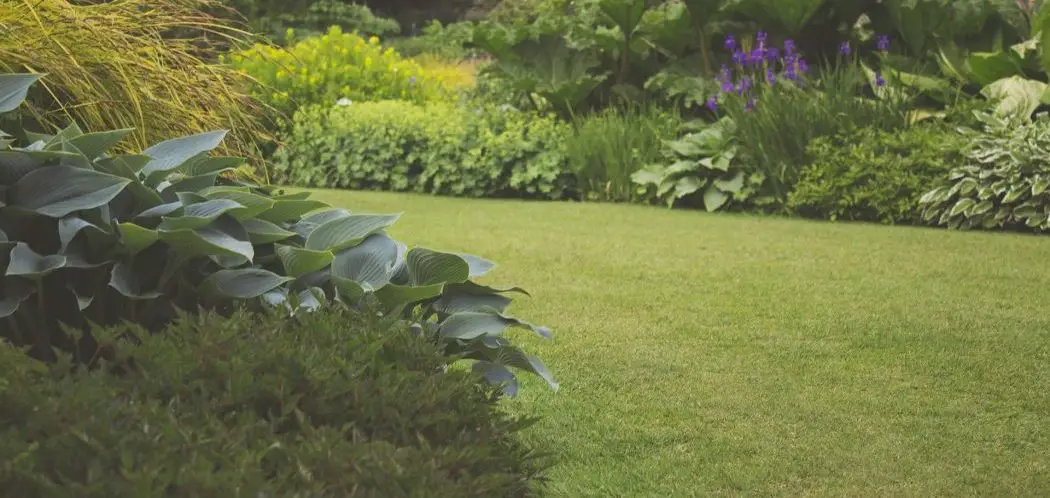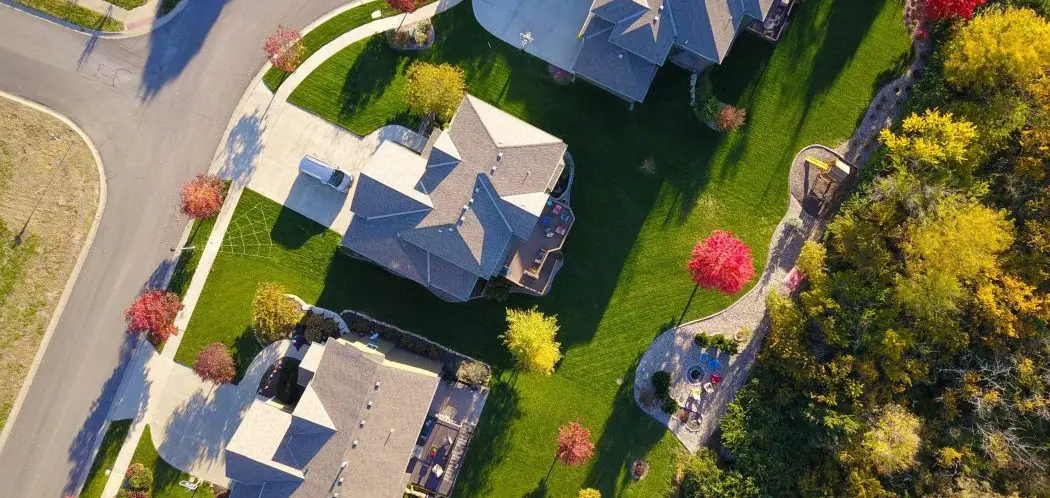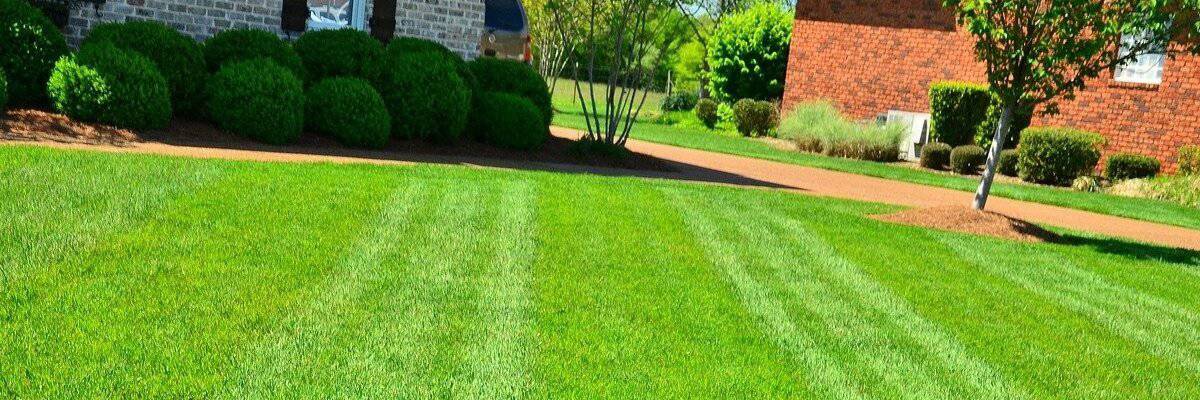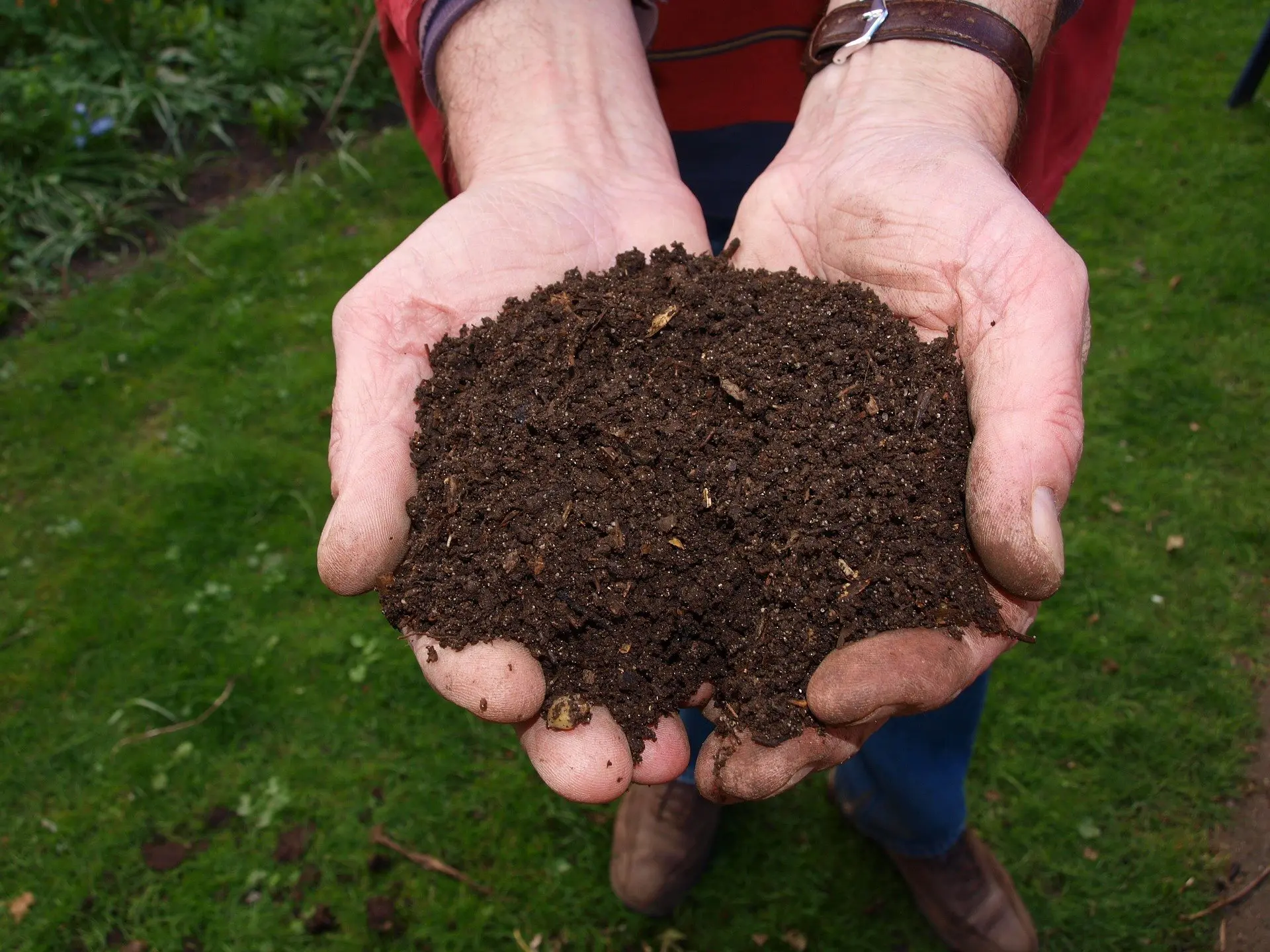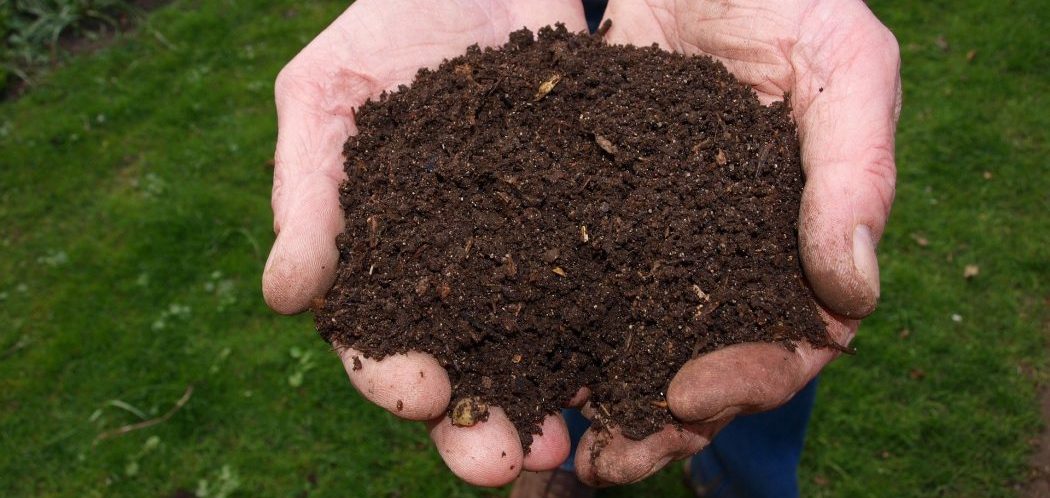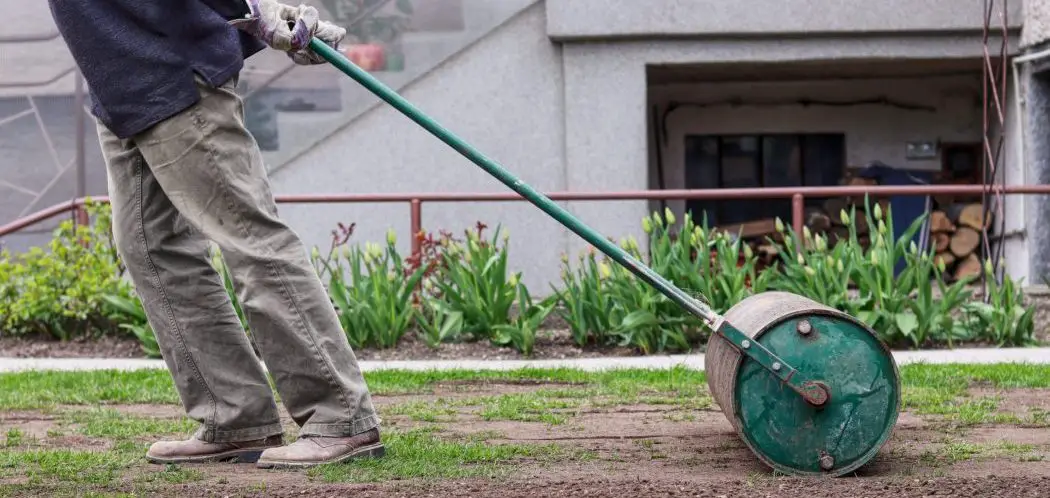If you find your lawn is uneven and bumpy, you may look into levelling it. Not only will levelling improve the aesthetic of your lawn, but it will result in a smooth plane that is easier to maintain. Eliminating the holes in your lawn also decreases the chance of personal injury from tripping.
Can you level a lawn in the fall?
Fall is the best time of the year to level a lawn. Early fall is preferable. The climate in the fall brings mild temperatures with a low risk of freezing temperatures and an adequate amount of precipitation. Your mixture won’t dry out or freeze over existing grass.
Factors to Consider
Precipitation
For most of us, fall brings an acceptable amount of precipitation. This rain leaves the ground pliable but not too damp. If the earth is too dry, it can be incredibly hard to break.
The amount of dirt you’ll be able to dig up at a time will be piecemeal. Conversely, if the ground is too damp, it is extremely hard to work with. Mud is much heavier and less predictable than slightly damp dirt. This can happen after the winter frost thaws in the spring.
Milder Temperatures
Fall is preferred over the summer because the milder temperatures make for more relaxed plants.
In the summer, your grass may be subject to extreme heat. This stresses out the plant, and the stress makes it much harder to cope with environmental changes such as the addition of extra soil.
Cool season grasses may be dormant during the summer months. Fussing with the soil while a plant is dormant could result in plant death.
Topdressing
When you topdress an area, you have to water it shortly after. This cements the soil mix and prevents it from being eroded by the wind. In the summer, this water will evaporate much more quickly than it would in milder seasons. This could result in the soil mix not getting enough moisture to anchor it down.
In the winter, if you watered the area you had applied the topdressing to, the water could freeze. This could speed up grass death in the area, and the ice will smother any root systems below. Once thawed, the uneven distribution of moisture in the area will only worsen the levelling issue you were attempting to address.
Reseeding
Lawns that require deep corrections will need to be reseeded. The thick layer of soil mixture applied to the top layer of earth will suffocate the existing grass. The season you choose to level your lawn is important because when seeding a lawn, you want the seeds to have ample time to grow and establish themselves as plants before encountering harsh weather conditions.
If you attempt to seed the area in the summer, the soil will lack the proper moisture to enable germination. In the winter, the seeds will freeze and never have a chance to grow. Seeding should be completed in the early fall or mid-spring. Both times of the year should bring mild enough weather to allow the seeds to grow in their medium.
Fall and Spring
The mild temperament of fall and spring are not only good for your plants, they’re good for you too. Doing lawn care in the heat of summer can cause sunburns and other heat-related injuries. The winter brings its own host of risks when it comes to caring for your yard. Frigid temperatures can cause damp surfaces to freeze over. Slipping on ice can result in broken bones, muscle strain, and concussions.
Which Season Is Best for Levelling the Lawn?
The time of year you choose to level your lawn will depend on the severity of the unevenness.
If the depressions in your yard are quite shallow, you can fix them by lightly topdressing the offending area. Topdressing is the process of applying a soil mix on top of existing vegetation to level out the area. Fall is the best time of year for topdressing. In autumn, your grass will not be stressed out by the heat of the summer or the frost of winter. The existing grass will have ample energy to grow up and around your topdressing before winter blows in.
When your lawn’s holes are so deep that your topdressing mix will need to be higher than the grass’s blades, your topdressing mix will suffocate the grass below. This will surely level the area, but now you’ll have to reseed the patch to replace the grass. This process is best completed in the spring.
If you attempt to reseed your freshly topdressed area in late fall, the grass seeds will not have enough time to germinate and grow roots deep enough to survive the upcoming winter. Your reseeding would be a complete waste if this happened.
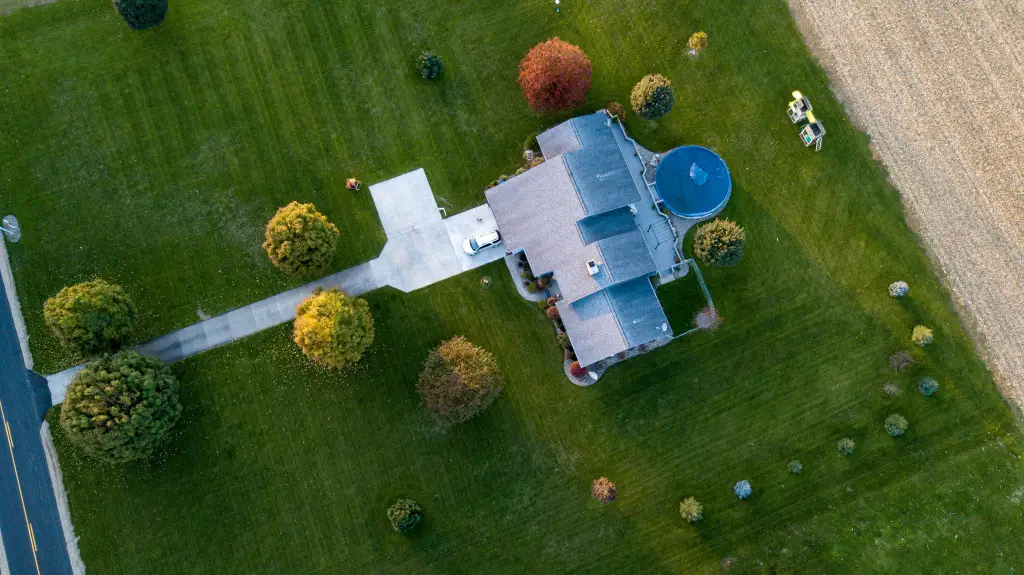
Flap Procedure
When you don’t have the means to reseed the valleys in your yard, you may consider digging up the grass in the area. Create a square around the perimeter of the hole, and dig up three of the four sides of the square. This will create a convenient flap that you can pull out of the way while you fill in the earth underneath. When you’re done, simply flop the grass back into position. Thoroughly water the area to cement the work you’ve completed.
The flap procedure can be performed in the fall or spring.
To accurately address the levelling needs of your landscape, thoroughly observe the depressed areas. It is helpful to use stakes and colorful marking tape to sequester the area. Then, measure the depth of those areas. If the area will require more than half an inch of corrective measures, topdressing will not work.
The Downfalls of Spring
We’ve identified that spring and fall are the best seasons to complete any levelling your lawn may need. However, spring could spell trouble for your freshly levelled lawn.
April showers bring May flowers, but they could also bring havoc to your lawn. Excessive rainfall could wash your topdressing away. It could also cause water bogging in the deeply depressed areas you haven’t gotten to level yet. The excess water collection in the holes would result in the soil becoming too soft.
Spring is an active time for bugs. Worms and grubs could get in your way while you try to fix your lawn. Besides their general unsightliness, earth dwelling insects could be attracted to your topdressing mix depending on the organic materials of your mix. They feast on these organic materials, which would reduce the volume of your soil mix. Wasps and bees are also very active in the spring and pose a serious threat to those with allergies to these insects.
Springtime isn’t a guarantee that winter is over. Some regions experience wintery weather well into March and April.
Spring is a busy time for other lawn care tasks. This season is when most blooming plants require pruning. This is also a crucial time of the year for fertilizing your yard. Reapplication of mulch and weed killing are also crucial tasks in the spring.
The Benefits of Fall
Fall brings mild temperatures with a very low risk for freezing weather. This is the perfect climate for levelling your lawn.
Begin your levelling in the early fall once the temperature begins to creep down from summertime highs. In the event you need to reseed patches of your lawn, this will give your fresh seeds plenty of time to germinate and grow roots before the winter threatens their survival.
Fall is the least active time for earth dwelling insects, and small animals won’t disturb your fresh topdressing as they’re too busy preparing to hibernate for the winter.
This time of year brings an adequate but not overwhelming amount of precipitation. This will enable your topdressing to remain where you’ve applied it and not get washed away. Your soil mixture won’t dry out or freeze over existing grass.
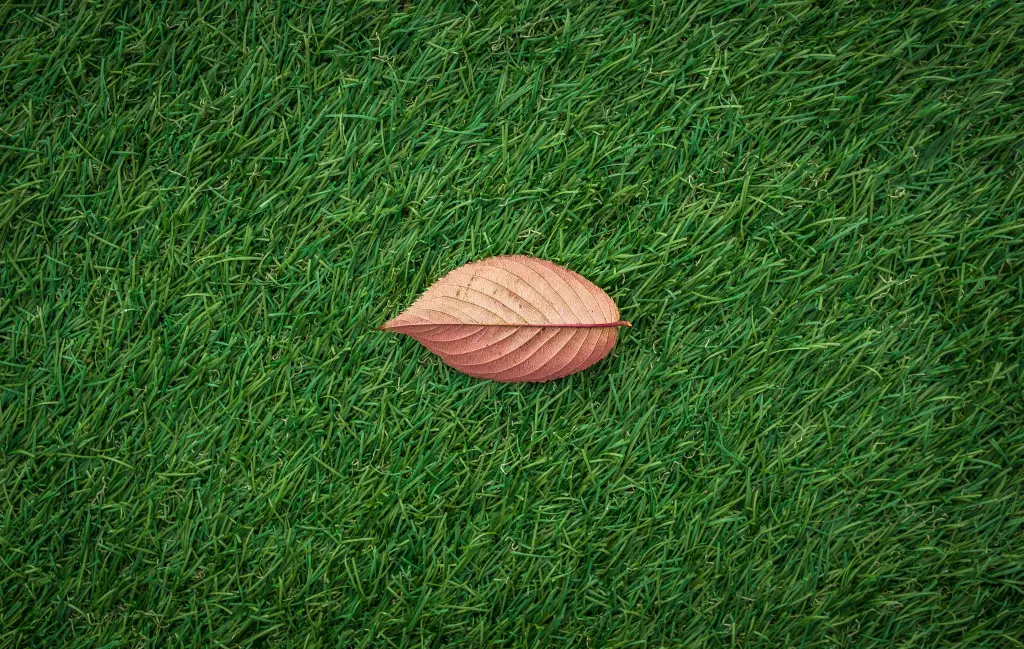
Prevention Methods
You don’t want to miss out on fun fall activities such as corn mazes and apple bobbing because you’re too busy levelling your yard. There are a few preventive measures you can take to reduce the development of holes in your lawn.
Avoid Cutting Your Grass Too Short
The way you mow could be contributing to holes in your yard. Cutting your grass too short could result in the grass dying. Where grass is not growing, soil is very susceptible to erosion. Ensure your lawn mower blades are at a proper height for the specific grass your yard is made of. Routinely check tire pressure of lawn mowers as well. Mowing with an off-balance lawn mower will cut your grass disproportionately as well.
Fertilizing and Overseeding
Keeping your lawn healthy and dense will also prevent holes from forming. This can be accomplished by routine fertilization and overseeding when applicable. Overseeding is the process of distributing grass seeds through an already established lawn. The new seeds fill in places where the grass has naturally thinned out or where foot traffic has tamped it down.
Aerating
Aeration is another important process to keep a lawn healthy. Small holes are created in an even fashion throughout the yard to supply oxygen, nutrients, and water deep into the soil. Aeration alleviates soil compaction. Compact soil is not suitable for grass growth. Roots, nutrients, and water cannot move easily through compacted soil.
In Conclusion – Can You Level a Lawn in the Fall?
Try as you may to keep the surface level, but it’s natural for lawns to develop small depressions over time. When you need to level your lawn, plan to do it in the early fall.

